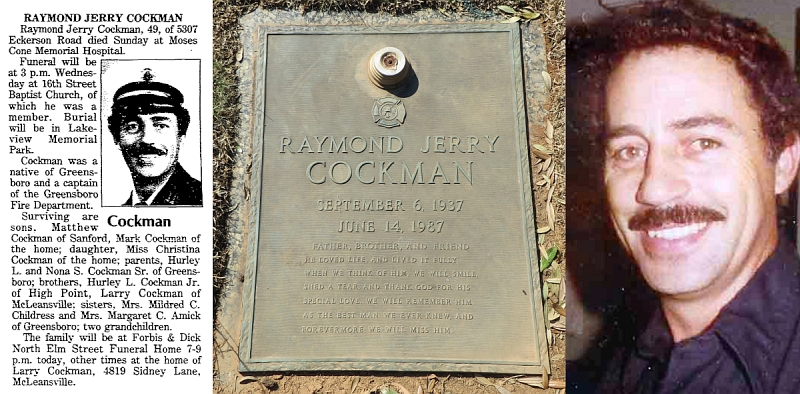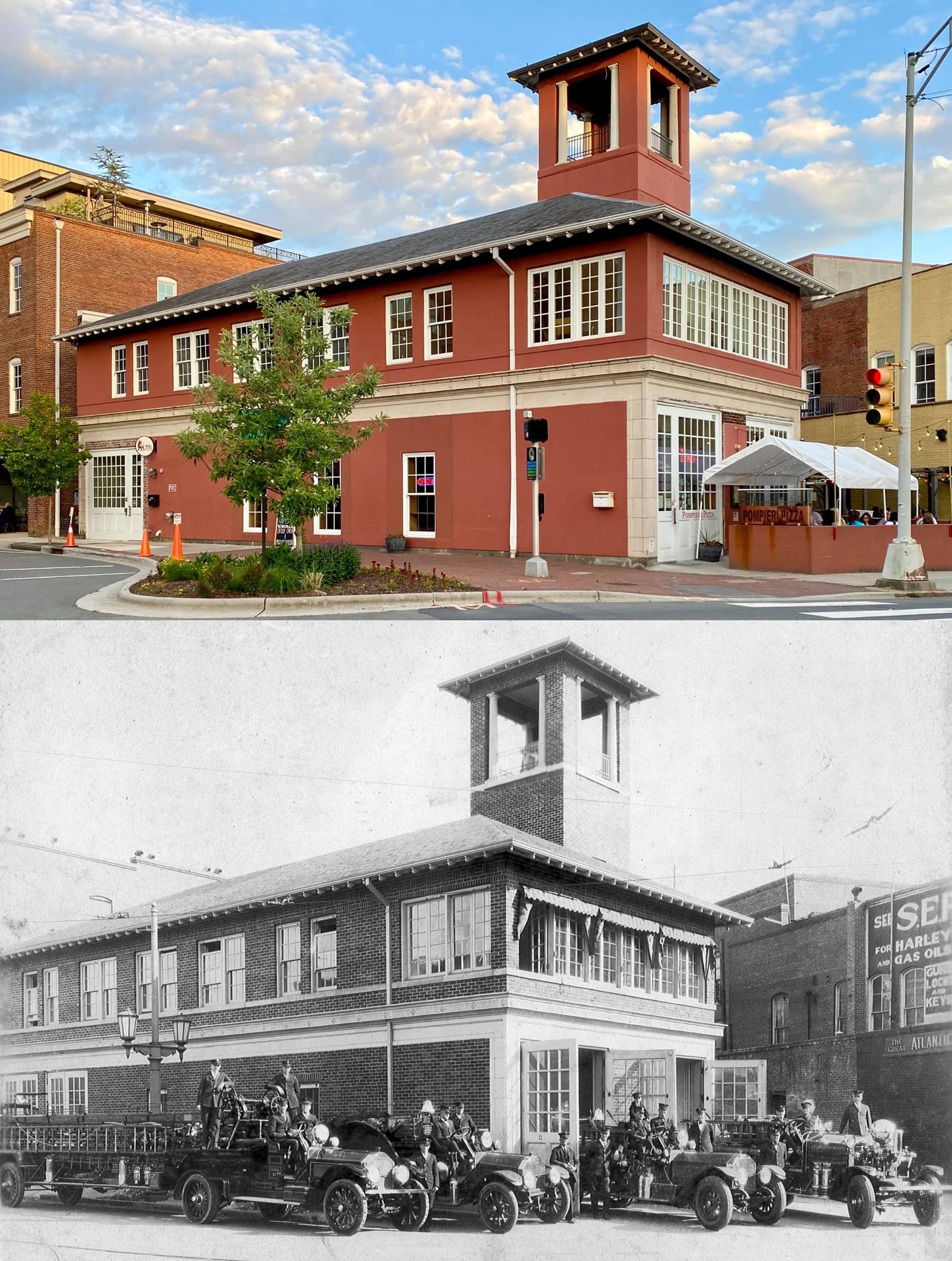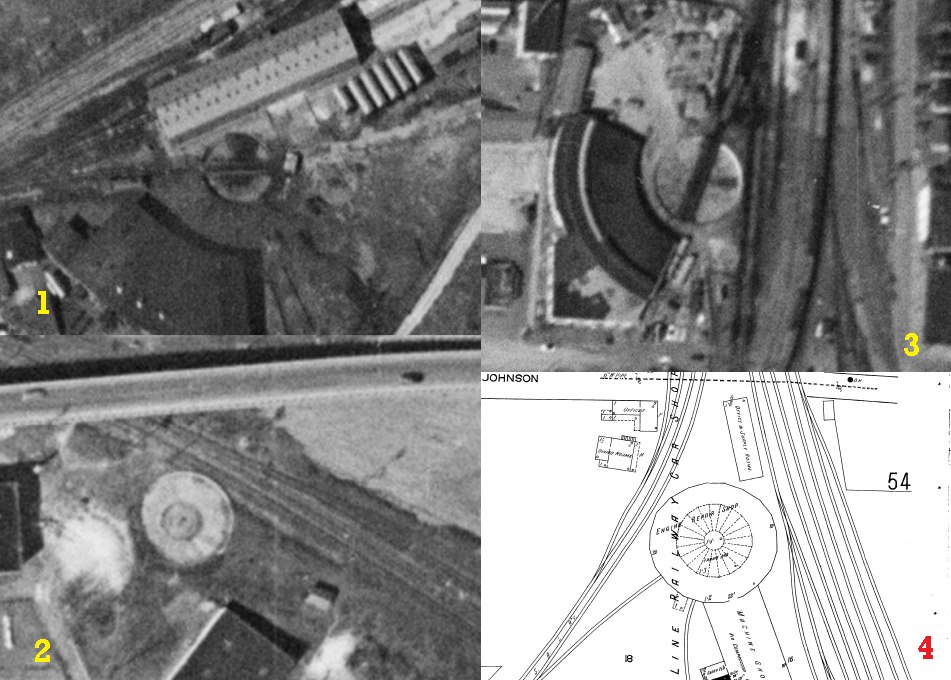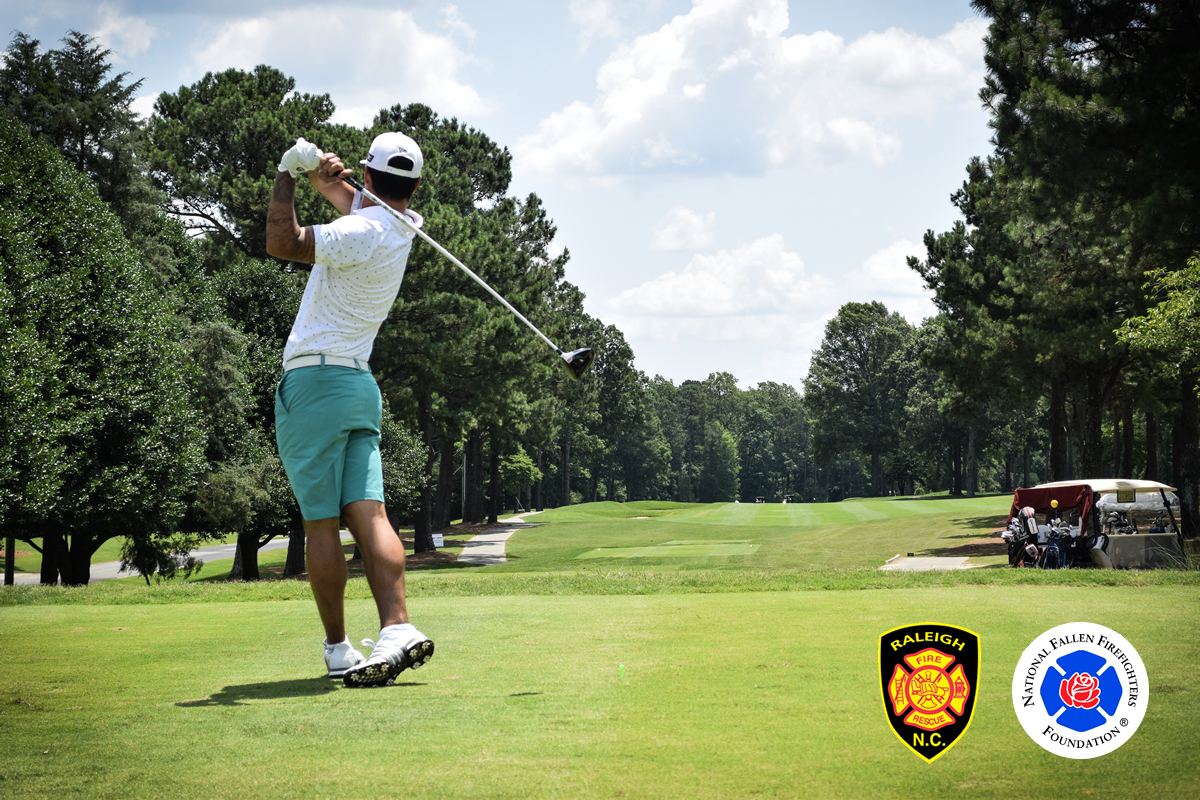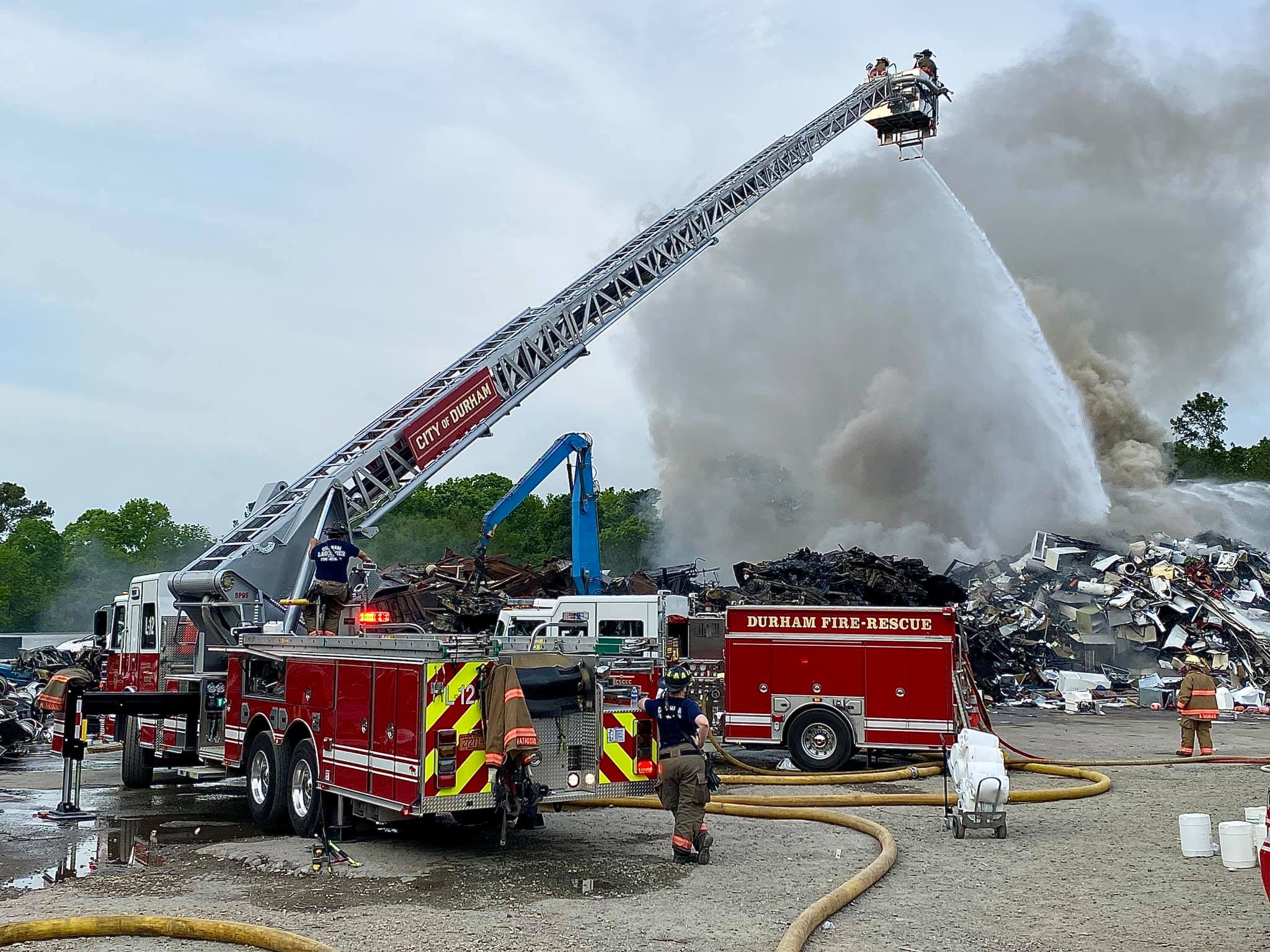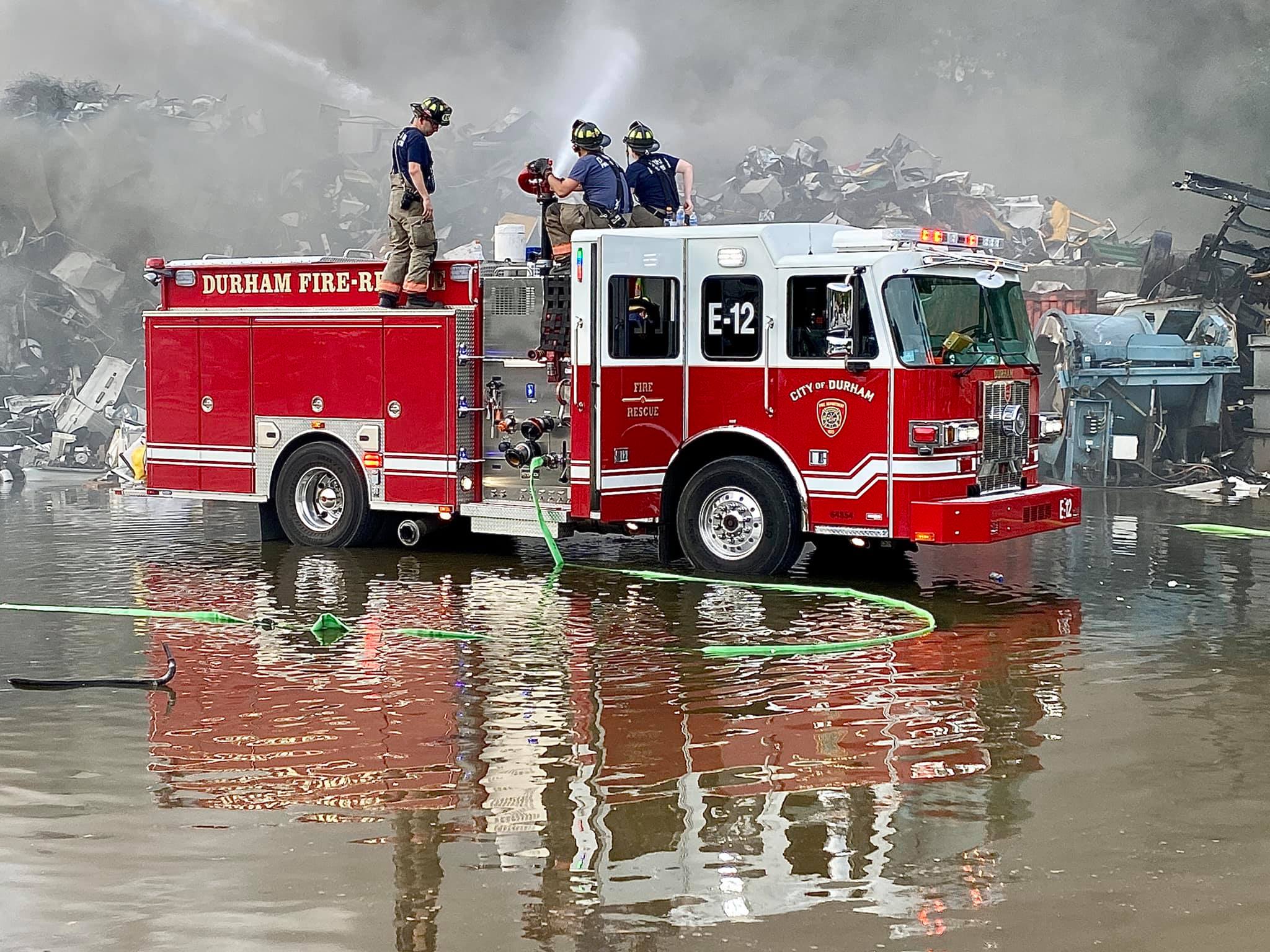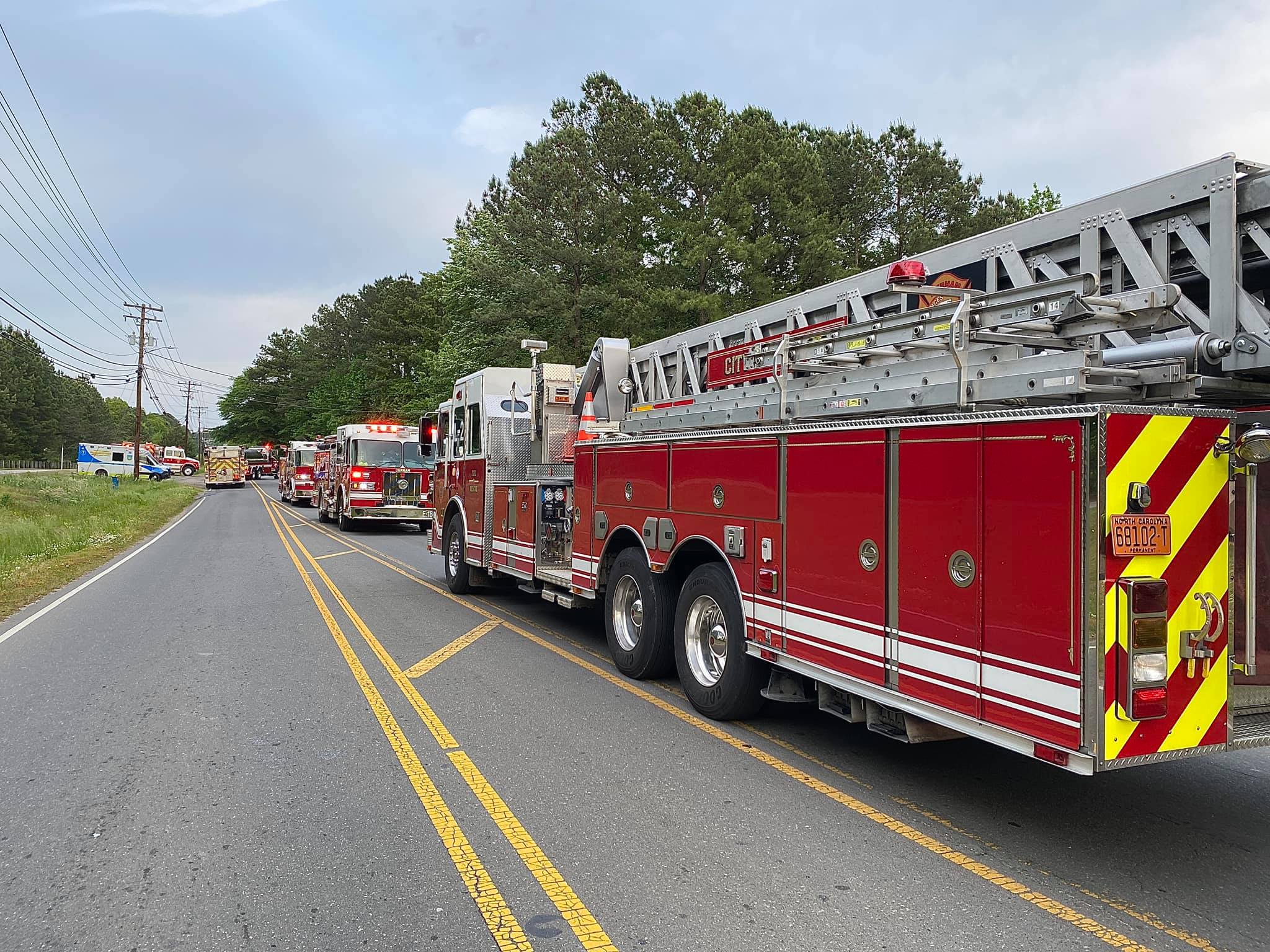On Sunday, June 14, 1987, Greensboro Fire Department Captain Raymond J. Cockman, 49, suffered a fatal heart attack while on duty at Station 6, which was then located on Westover Terrace.
He was Captain on Engine 6, and they had just returned from a call. It was 7:20 p.m. and they were getting ready to play basketball.
The other firefighters at the station promptly started CPR. Guilford County EMS arrived and began advanced patient care.
Raymond’s brother Larry was a Captain on nearby Engine 9. His Battalion Chief, also housed at that station, took Larry to Station 6. They responded with lights and siren.
Larry remembers holding his brother’s hand as he passed away.
Raymond had been a member of the department 29 years. He was loved by many, and the reason that Larry entered the department.
Two days later, the funeral service was held at the 16th Street Baptist Church. The arrangements were handled by Forbis and Dick funeral service. The burial was at Lakewood Cemetery in Greensboro.
The night before, Larry and the family received friends for four hours at the visitation. The next day, hundreds of firefighters attended the funeral. The procession included several Greensboro fire units.
At the burial, Larry remembers, it was a bright sunny day. “And all of a sudden, a big rain cloud just came over and dumped rain” on everyone at the grave site. We all said it was his last prank on us, everyone “standing out in the rain in full dress uniform.” Larry remembers his brother as a “fun-loving jokester.”
On the day of Raymond’s passing, the two brothers had attended a funeral that morning, for the brother of Greensboro firefighter Eddie Coleman. Larry notes that Eddie as always a good friend to both of them. Now retired, Eddie’s on the list for a future interview. Since 2019, Larry has been interviewing retired GFD members as part of a department-wide history project.
Larry still vividly remembers the day of his brother’s passing, the support of his fellow firefighters, and many who came to the visitation.
“My brother was a college athlete who played quarterback at Lees McCrae and ASU. At the visitation, his high school coach was there and he whispered in my ear that Raymond the best quarterback he had ever coached.”
Larry recalls that when his older brother graduated from Rankin High School, he was selected as their Mascot and got to dress up in a cap and gown and march with them. “At eight years old I thought I had really done something.”
Now a retired Battalion Chief himself, he looks back on June 14 and says “that was the toughest day in the fire department I ever had.” And adds, the second toughest day was when I went back to the station, to get his clothes and clean out his locker.
Note
Raymond Cockman was the second Greensboro firefighter to die in the line of duty. Firefighter Jesse Grey died on Christmas Eve, 1969, after falling from and being run over an engine that was backing up. And April 10, 2002, Captain W. “Jackie” Beard died of a heart attack, while leading a live burn for recruits at a house on Church Street.
Old Station 6 on Westover Terrace opened in 1949 and closed in 1989 and was subsequently demolished. The present Station 6, formerly numbered Station 17, is located at 4504 Lake Brandt Road. [It is now numbered Station 41.]
The Greensboro Fire Department history project has made 40+ video interviews of retired members available for public viewing at http://gfhbc.org/interviews.html. Here’s a news story about the project, https://myfox8.com/news/greensboro-firefighters-stories-being-preserved-in-history-book/
